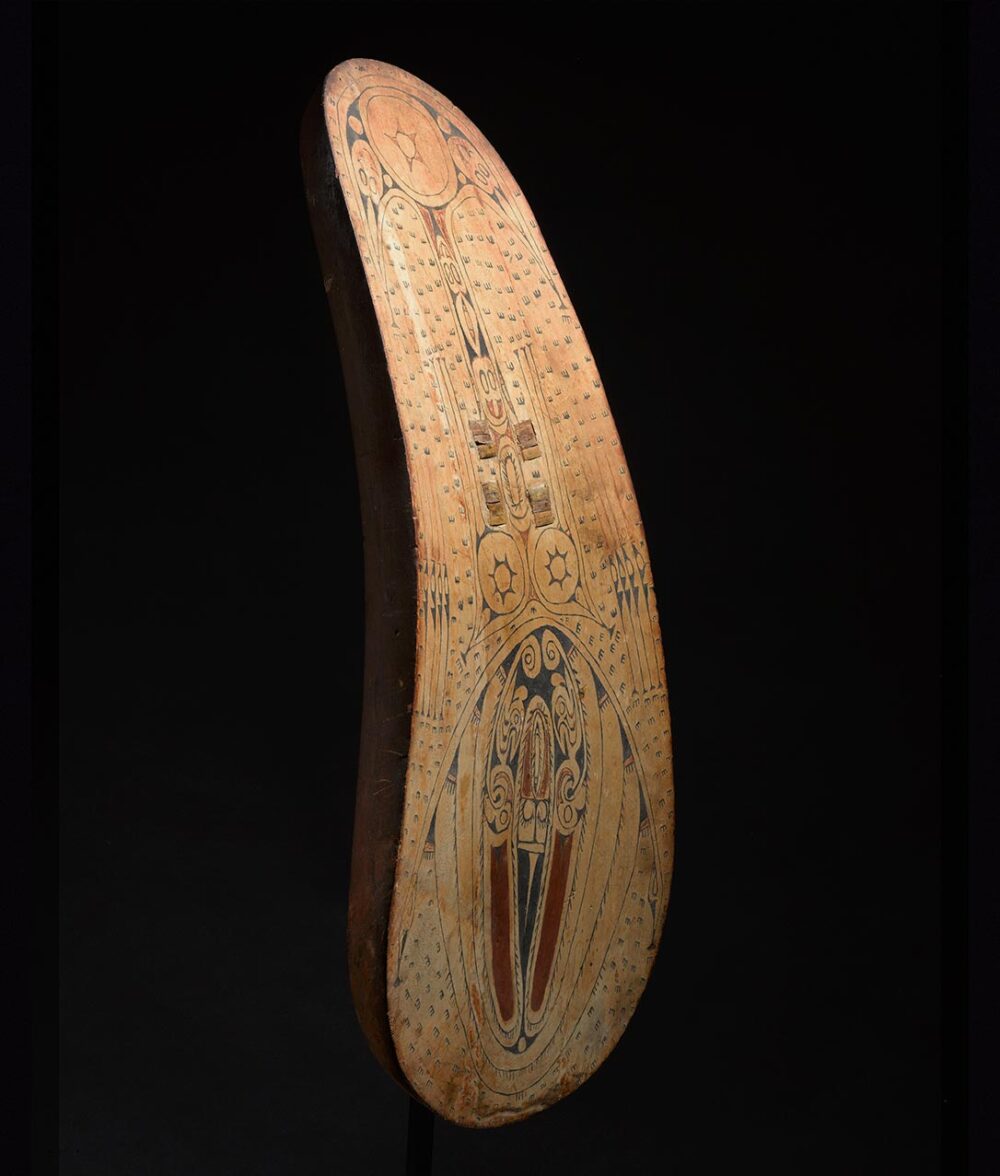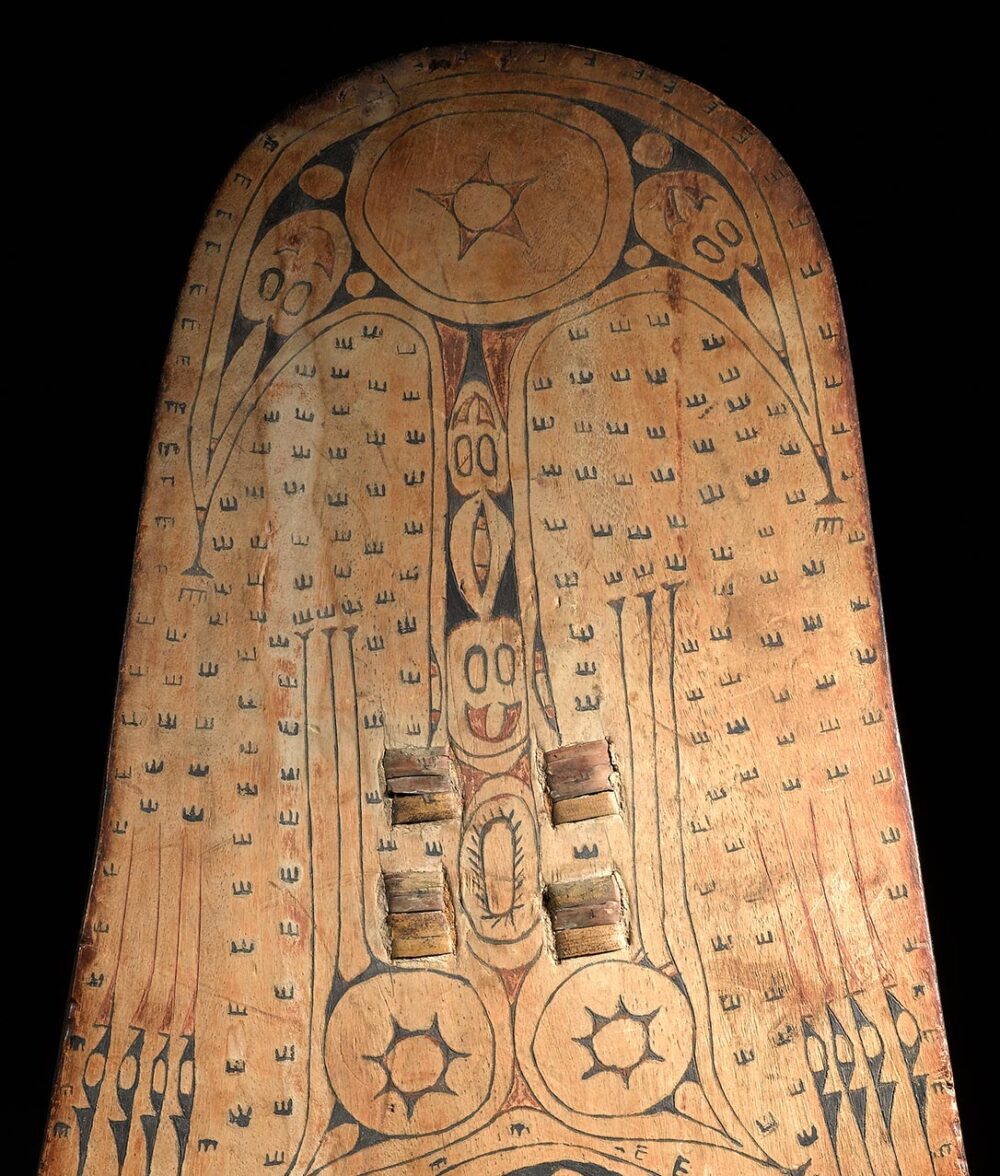Shield, Vayola
Massim, Trobriand Islands, Papua New Guinea
19th c
Provenance:
William Downing Webster, UK
Augustus Henry Lane Fox Pitt- Rivers, Rushmore, Dorset, presumably acquired from the above.
Alexander Lane Fox Pitt-Rivers by descent from the above.
Captain George Pitt-Rivers, by descent from the above.
Stella Howson-Clive by descent from the above.
Merton Simpson, New York
Martin and Faith-Dorian Wright collection, NY, acquired from the above on June 14, 1967.
The shield is of a convex, oval shape with a double cane grip on the back. On the front it is painted with typical curvilinear designs using organic pigments – red, black and white. Although the designs are always similar, no two shields are ever exactly the same.
The art of the Trobriand Islands is mostly two-dimensional, with painted or carved designs often covering an object’s entire surface. The patterns on all Trobriand shields are similar and have specific meanings. Here, the small pronged forms are stars, the heads on the sides at top are fish, and the scrollwork motifs at bottom center represent the heads and beaks of frigate birds. The large, T-shaped design in the top center represents a turtle-shell spatula that was an important trade item.
Before Trobriands men went to war, the village magician would cast a spell over each shield by resting it on his knees, and whispering his spell into the decorated surface, empowering it with his breath. As a result, the shield became impervious to spears. Therefore, the painted designs were conceived to have magical powers that could be invoked to help ensure survival and success in combat.
Shield, Vayola
Massim, Trobriand Islands, Papua New Guinea
19th c
Provenance:
William Downing Webster, UK
Augustus Henry Lane Fox Pitt- Rivers, Rushmore, Dorset, presumably acquired from the above.
Alexander Lane Fox Pitt-Rivers by descent from the above.
Captain George Pitt-Rivers, by descent from the above.
Stella Howson-Clive by descent from the above.
Merton Simpson, New York
Martin and Faith-Dorian Wright collection, NY, acquired from the above on June 14, 1967.
The shield is of a convex, oval shape with a double cane grip on the back. On the front it is painted with typical curvilinear designs using organic pigments – red, black and white. Although the designs are always similar, no two shields are ever exactly the same.
The art of the Trobriand Islands is mostly two-dimensional, with painted or carved designs often covering an object’s entire surface. The patterns on all Trobriand shields are similar and have specific meanings. Here, the small pronged forms are stars, the heads on the sides at top are fish, and the scrollwork motifs at bottom center represent the heads and beaks of frigate birds. The large, T-shaped design in the top center represents a turtle-shell spatula that was an important trade item.
Before Trobriands men went to war, the village magician would cast a spell over each shield by resting it on his knees, and whispering his spell into the decorated surface, empowering it with his breath. As a result, the shield became impervious to spears. Therefore, the painted designs were conceived to have magical powers that could be invoked to help ensure survival and success in combat.












